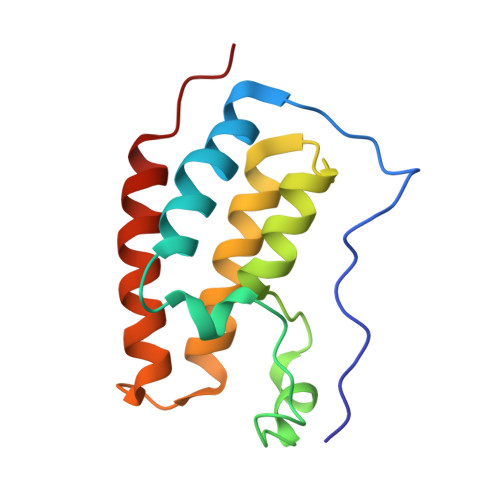Integrated Strategy for Lead Optimization Based on Fragment Growing: The Diversity-Oriented-Target-Focused-Synthesis Approach.
Hoffer, L., Voitovich, Y.V., Raux, B., Carrasco, K., Muller, C., Fedorov, A.Y., Derviaux, C., Amouric, A., Betzi, S., Horvath, D., Varnek, A., Collette, Y., Combes, S., Roche, P., Morelli, X.(2018) J Med Chem 61: 5719-5732
- PubMed: 29883107
- DOI: https://doi.org/10.1021/acs.jmedchem.8b00653
- Primary Citation of Related Structures:
6FNX, 6FO5 - PubMed Abstract:
Over the past few decades, hit identification has been greatly facilitated by advances in high-throughput and fragment-based screenings. One major hurdle remaining in drug discovery is process automation of hit-to-lead (H2L) optimization. Here, we report a time- and cost-efficient integrated strategy for H2L optimization as well as a partially automated design of potent chemical probes consisting of a focused-chemical-library design and virtual screening coupled with robotic diversity-oriented de novo synthesis and automated in vitro evaluation. The virtual library is generated by combining an activated fragment, corresponding to the substructure binding to the target, with a collection of functionalized building blocks using in silico encoded chemical reactions carefully chosen from a list of one-step organic transformations relevant in medicinal chemistry. The proof of concept was demonstrated using the optimization of bromodomain inhibitors as a test case, leading to the validation of several compounds with improved affinity by several orders of magnitude.
Organizational Affiliation:
CRCM, CNRS, Inserm, Institut Paoli-Calmettes , Aix-Marseille University , 13009 Marseille , France.
















